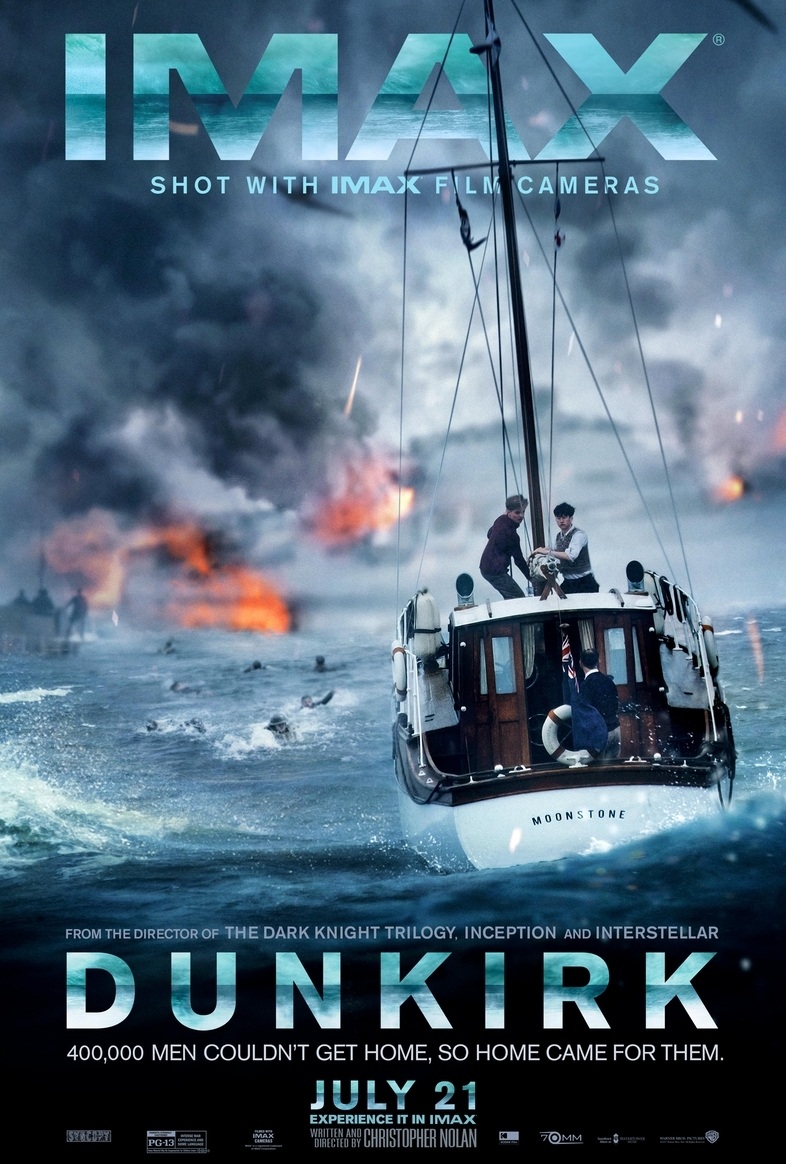“Dunkirk” has been getting some of the highest critical praise of any movie this year and if you plan to see it (it opens Friday, July 21), this is a movie that screams out to be seen in IMAX.

Writer-director Christopher Nolan shot most of the film with the giant-screen IMAX cameras that, more than any war movie before, envelope audiences in the land, sea, and air dramatizations of the terror of 400,000 British soldiers trapped on the beach of the English Channel in France while being shot and bombed like fish in a barrel.
The actual historical incident that occurred over the course of more than a week in May-June of 1940, is an incredible story, not only of the impending slaughter of nearly half-a-million soldiers — Winston Churchill said he would be happy if 30,000 – 40,000 lives could be saved — but primarily of the heroic efforts of civilian British fisherman and boat owners who rushed to the rescue of the soldiers, amazingly saving 300,000 lives.
Nolan’s re-creation is not nearly as dramatically compelling as one might expect, or as engaging as war films such as “Saving Private Ryan” – in fact, it’s unrelenting tense and offers almost no character development or personal stories whatsoever — but it is a visual and sonic tour de force, presenting likely the most realistic and gripping depictions of soldiers being gunned down and drowning in the history of cinema.
While purists will insist the 70mm film presentation in select theaters around the country is the best (there are entire states that are not offering that option in any theater), most moviegoers will not notice an appreciable difference in film image quality between standard digital, 70mm or even IMAX.
But what is unmistakably superior is the much larger screen size of the giant IMAX format — even in the AMC mini-max theaters — and the incredible IMAX sound system that literally rattles you in your seat and surrounds you with the sound of bullets, aerial dogfights and boat engines for most of the film.
There are a couple dozen IMAX theaters presenting a 70mm version instead of the more common digital IMAX.
Nolan offers no set-up at all, but just dives right in to putting you on the beach, in the cockpits, and on the sinking water craft. We learn nothing about any of the characters or the decisions that led to this disastrous situation. The film jumps back and forth between the situation playing out on the beach, on the boats, and in the air – with the time-frame of each not clear in relation to the others, and often confusing until they kind of come together in the end. The crippling emotional aftermath for the soldiers involved for the rest of their lives is also left untold, but only slightly hinted at. In addition to little storytelling – there is also not much of a traditional film score, disappointing since what is there is composed by the incomparable Hans Zimmer.
The only broadly recognizable professional actor is Kenneth Branagh, who is fine in his role as a commander on the beach who spends most of the time being dazed and paralyzed and what is unfolding around him. Super pop music star Harry Styles (of the former British boy band One Direction) makes a notable acting debut as one of the soldiers constantly trying to keep from being shot, bombed and drowning on a boat.
— By Scott Hettrick
